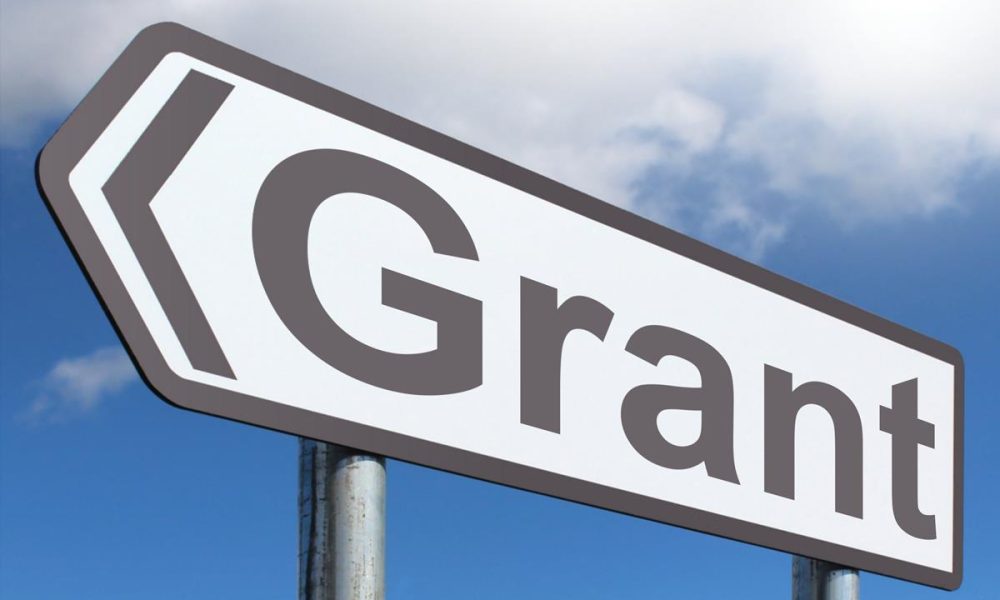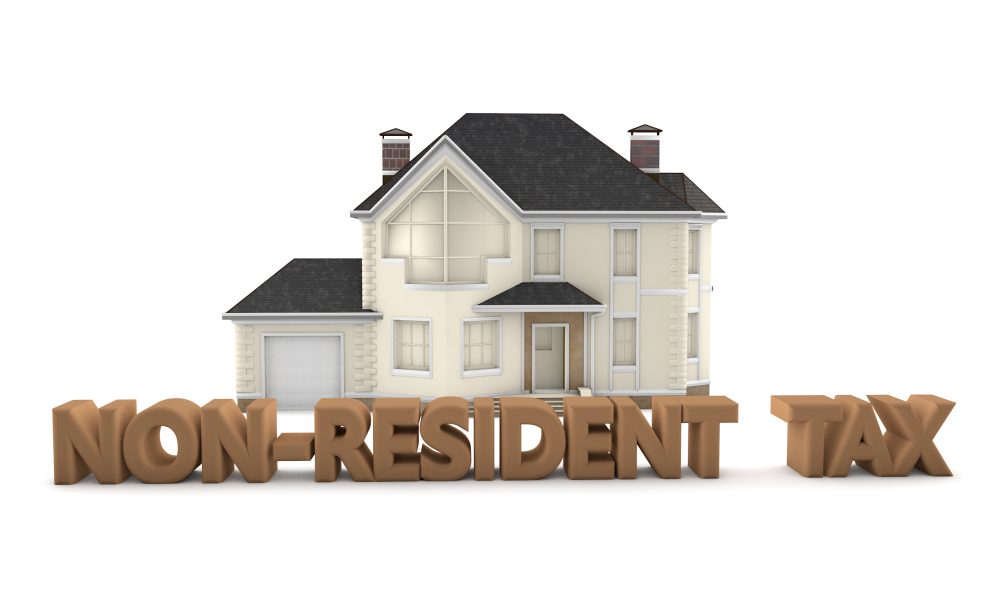Category: Business Advisory
Hair Salon Business Model: which style suits you?
As a hair salon or barber shop owner, you aim to run your business in a way that maximises revenue, reduces costs, and ensures a good working relationship with your staff and customers. It is important to choose the right model that suits your business needs from the outset. We discuss below three different models of business:
- Full operation, whilst operating:
- a PAYE scheme
- a self-employed model for hairdressers
- Chair rental
- charging a fixed weekly rent to barbers
- charging a percentage of the chair’s takings
- a combination of a and b
- Shop rental
Full Operation
Full operation is the most involved and therefore carries the capacity for highest profits. This model also incurs the highest administrative costs, both in terms of money and time, including:
- Paying over 20% VAT on your sales if turnover exceeds £85,000
- Maintaining a payroll service to your staff
- Carrying out senior management responsibilities
Self-employed basis
As senior manager, you could continue operating the business, whilst moving some of your staff to a self-employed basis. The benefit of transitioning could save money in the following ways:
- No legal obligation to pay for sickness, maternity or holiday
- You avoid paying Employer’s national insurance
- There is no need to worry about auto enrolment pensions or make contributions
Should you pursue this model, it would be worthwhile implementing a service contract with the freelancers, to ensure that both parties’ expectations are understood. Of course, the risk of a barber turning up late, taking a day off or poaching clients for their own business remains. You should take on full advice, including with respect to legislation around self-employment.
Internal Controls
If you are not present at the salons throughout the day, it would be worthwhile implementing Internal Controls. These should be considered especially if you will continue to operate the salons, or even if you plan to sub-let at a variable rate dependent on performance. Internal Controls for cash sales and collections include:
- Reconciling till rolls to cash collections each day.
- Reconciling cash collections with banking and sales records each day.
- Restricting the receipt of cash and the recording of sales by making sure that only one person is in charge of the cash register.
Internal Controls to accurately track employee time should be considered if you are paying your staff per hour, either as employees or subcontractors. To help you accurately monitor and control employee timesheets, we have helped our clients implement an app-based time management software which you or your management could use to organise rotas.
Chair rental
There are three models to renting out chairs:
- Charging a fixed weekly rent to the freelancer
- Charging a percentage of the chair’s takings
- A combination of a and b
With option 1, if there is a high volume of customers for a particular chair you will lose out on sales as the freelancer will take all of the earnings. Option 2 avoids this problem, however if the freelancer doesn’t turn up for work then you lose out on rental income compared to the first model. A combination of the two methods is arguably the best way forward, however it would require monitoring of sales figures. The incentive agreement should be set at a level where the freelancers have the potential to make more money than they currently do.
You would need to charge VAT on rental income should your turnover exceed £85,000. A non-VAT registered freelancer would then suffer the VAT. Of course, the barber may also seek VAT registration, depending on his or her particular circumstances.
Compared to the full operation model with staff there will be no wages, national insurance and pensions costs however sales will be limited as per your agreement with the freelancers. Should you pursue this model, it would be worthwhile:
- implementing a service contract with the freelancer. It would be important to draft strong payment terms to avoid the risk of arrears.
- implementing an EPOS till system to give you full visibility of sales (important with incentive agreements).
- considering whether you would allow freelancers to sell their own products, or take a commission from your sales.
An additional risk compared to an employee-based model is that freelance workers may come and go, thereby requiring more management time to maintain occupancy.
Shop rental
This option is the least involved. If you do not foresee a pick-up in footfall in your salon, you may consider subletting your salon and collecting the passive income. You should bear the following points in mind:
- First check whether your lease allows you to effectively sub-let the premises.
- Should turnover increase more than you anticipate, you will not be sharing in the upside.
- Should you eventually sell the business, your eligibility to pay the Entrepreneurs’ Relief rate of CGT of 10% will be in jeopardy.
Summary
- The full operation model has the greatest potential for maximising profitability but carries the highest level of administrative costs.
- Internal controls regarding hours worked and wages paid are paramount, especially if you will continue to be directly involved in the full operation of the business.
- If you decide to base your business model around working with freelancers, it is important that both parties’ duties are understood (owner and freelancers). A service contract between parties is key.
- If the chair rental model is pursued you will need to charge VAT if rental income exceeded £85,000, which a freelancer could then suffer.
- The chair rental model is the most cost-effective option, but you risk losing out on revenue if there is a high level of footfall.
Whether you’re an existing client or don’t yet use our services, we would be pleased to help you. Contact Mouktaris & Co Chartered Accountants for expert advice or click here to subscribe to our Newsletter.
Trading in Goods post Brexit
For many, Brexit continues to be the undefined, being negotiated by the unprepared, in order to get the unspecified, for the uninformed. For others, Boris Johnson’s hard-knuckled talk, timed to boil down to deadline day, represents the dominant strategy that always had to be played against a fiercely rigid opposition- one that also risks losing out, albeit less than the protagonist.
In this post we will focus on practical examples of trading in goods post Brexit on 1 January 2021, paying special attention to taxation.
IMPORTER OF EU GOODS
Dom is a spectacles retailer based in England. Some of the spectacles he sells are purchased from a Spanish supplier called Ojos. What will be the difference between shipments arriving after 1 January 2021 compared to now?
In short, all imports of goods arriving into the country will be subject to import VAT and potentially customs duty. Traders will require an EORI number to move goods between the UK and non-EU countries.
Import VAT and Postponed Accounting
Concerning VAT, there will be no difference in Dom importing goods from an EU or non-EU country. “Postponed accounting” will be available for all imports made by a VAT registered business- that is for both EU and non-EU imports. Postponed accounting means Dom will declare and recover import VAT on the same VAT Return, rather than having to pay it upfront and recover it later. This is a cash-flow benefit for businesses that previously imported from outside the EU where VAT was paid on arrival and later claimed as input tax on a VAT return up to three months later. Import VAT certificate (C79) will no longer be issued, but can instead be downloaded from the HMRC website.
Dom does not need to apply to use postponed VAT accounting: it can be requested automatically when the shipment arrives. If however Dom deregisters, VAT on future imports would be paid at the time of arrival in the UK and become an exra business cost.
Customs Duty
From 1 January 2021, Dom will need to make customs declarations when he imports goods from the EU. In some situations, you can delay making a declaration for up to 6 months after you imported the goods. For controlled goods such as alcohol and tobacco however, a declaration must be made when the goods arrive. You may want to get someone to deal with customs for you or find a customs provider to help you.
A comprehensive set of actions for goods importers can be revised by visiting gov.uk, including finding out whether you can use postponed VAT accounting and checking the rate of customs duty and VAT on imports.
Instrastat
For UK businesses that buy goods from EU suppliers exceeding £1.5m, intrastat declarations must continue to be completed in 2021 for arrivals of goods from the EU. For dispatches from the UK, the intrastat reporting obligations only apply to goods being ‘exported’ from Northern Ireland to any EU VAT registered customers in case a threshold of £250,000 is exceeded.
EXPORTS
Back to Dom, he has received an order from a consumer based in Germany for a pair of spectacles. Until 31 December 2020, Dom will ship it to the customer and charge UK VAT at 20%. If Dom sells more than €100,000 of goods into Germany in a calendar year, to non-VAT registered customers, he must register for VAT in Germany and charge 19% German VAT on future sales. This is the essence of the “distance selling threshold” rules.
From 1 January 2021, the situation changes. First, the distance selling rules become obsolete, as the UK is no longer part of the EU. Instead, any shipments of goods from a UK supplier will be subject to VAT and duty when they arrive in the other EU country, so 19% VAT plus duty in the case of Germany. Dom’s sales will be zero rated for UK VAT purposes, in the same way that exports of goods to non-EU countries are zero rated.
This may pose a commercial and competitive hurdle for Dom. If before 1 January 2021 Dom bought spectacles from Ojos in Spain for £50 and applied a mark-up of 100% plus VAT for his sales, he will charge £120 for a business-to-consumer sale in Germany. If after 31 December 2020 Dom now pays customs duty of say 5% when the goods are imported from Spain to the UK, this will yield a cost of sales figure of £52.50 and therefore a selling price of £105. The export to the German consumer will now be zero rated for UK VAT but subject to German VAT and customs duty when it arrives there. If the import duty was 10%, with the VAT added on top, this would yield a final selling price of around £137, that is £105 plus £10.50 duty and 19% VAT on £115.50.
Warehouses in Europe
Like Dom, there is the possibility that clients could face a double duty charge on goods arriving into the UK from an EU supplier and then shipped out to the EU again. An EU warehouse may be an option in this scenario, obtaining a local VAT number to buy and sell goods from there. The challenge is for each business to consider its supply chain and where optimal trading outcomes may lie. Afterall some goods that are standard rated in the UK might be subject to reduced VAT rates in other EU countries. And some goods will be duty free to help the position further.
OTHER VAT SCHEMES
Triangulation
Triangulation is another important VAT simplification that may be lost after Brexit. UK companies currently relying on triangulation in order to avoid the need to register for VAT in an EU Member State, will also need to assess their position. Such arrangements will no longer be available, and this may result in multiple VAT registration requirements.
Margin schemes
Margin schemes involve goods, such as the second-hand margin schemes. In October 2020, HMRC issued a policy paper ‘Accounting for VAT on goods moving between Great Britain and Northern Ireland from 1 January 2021‘. The paper suggests that margin schemes will remain available for sales of goods that are purchased in Northern Ireland or the EU, whether sold to customers in Northern Ireland, Great Britain or the EU. On the contrary, margin schemes will not usually apply for sales in Northern Ireland where the stock is purchased in Great Britain.
DUTY FREE
Concerning us all, the Treasury has published its policy decisions regarding duty free shopping carried by passengers across borders:
- duty-free shopping will be extended to include EU countries;
- tax-free sales in airports of goods, such as electronics and clothing, for passengers travelling to non-EU countries will end; and
- VAT refunds for overseas visitors in British shops will be removed and replaced by a buy-and-ship mechanism.
WHEN MIDNIGHT STRIKES
All the while it is worth remembering that a sub-plot continues to develop in the guise of late-in-the-day Brexit negotiations, akin to booking a GP appointment for a patient(s?) approaching life-support. A free trade agreement post-Brexit is not the whole solution for UK traders. Many of the practical issues of moving goods will not be resolved by a free trade agreement. A free trade agreement will not remove the obligation to submit customs declarations for example, therefore problems with who is legally permitted to make declarations on export and import will arise. A deal would provide for tariff-free trade on goods that qualify as EU or UK made, helping cushion the blow for sensitive sectors including automotive and agriculture. It would also include other measures to help trade flow — recognition of truckers’ permits for example. Most trade experts agree it would be better than nothing.
HOW TO PREPARE FOR BREXIT – CHECKLIST
We would urge our clients to visit gov.uk/action-2021 for a step-by-step revision on how your business may be affected.
The Institute of Chartered Accountants in England and Wales has prepared a quick-start guide, outlining a variety of areas that could impact your business post Brexit, to help you prepare for when the transition period has ended. 10 questions to ask include:
- Where will you get more cash, if you need it?
- What help do you need to access potential new markets?
- Have EU/EEA/Swiss-national employees registered for the settlement scheme?
- How would additional customs duties affect your sales and supply chain?
- Are you ready for customs? VAT and customs duty requirements from 1 January 2021
- Can you benefit from simplified import procedures?
- How will your principal contracts be affected by Brexit?
- Do you receive personal data from the EU/EAA?
- How will changes to VAT affect you?
- Do your corporate reports reflect Brexit risk?
Whether you’re an existing client or don’t yet use our services, we would be pleased to help you. Contact Mouktaris & Co Chartered Accountants for expert advice or click here to subscribe to our Newsletter.
Trading in Services post Brexit
To start off with some good news, the rules for services will largely remain unchanged after 1 January 2021- as things stand.
Trading in services with the EU can be categorised into three broad scenarios which will cover most UK traders.
Sales of business to business (B2B) services
The general B2B rule (VAT Notice 741A) stipulates that if the customer is outside the UK and in business, no UK VAT is charged on the services in question. The one change come 1 January 2021 concerns EU sales lists, which will not need to be completed.
Practically, it would still be wise to show the EU customer’s VAT number on the sales invoice, because it’s the best evidence of a B2B deal (though there are other source documents). Afterall it is the B2B outcome which means the place of supply is the customer’s country, thereby making the supply “outside the scope” of UK VAT.
Buying services from EU suppliers
The status quo is that a VAT-registered UK business that buys services from abroad must apply the “reverse charge”. This applies to supplies not just from the EU. After 31 December 2020, nothing is planned to change.
Where the reverse charge applies to services which you receive, you, the customer, must act as if you are both the supplier and the recipient of the services. You simply credit your VAT account with an amount of output tax, calculated on the full value of the supply you’ve received, and at the same time debit your VAT account with the input tax to which you’re entitled, in accordance with the normal rules. If you can attribute the input tax due under the reverse charge to your taxable supplies (and so can reclaim it in full) then the reverse charge has no net cost to you. This tends to be the case if you are in business. If you cannot attribute the input tax due the effect is to make you pay VAT on the supply at the UK rate. This puts you in the same position as if you had received the supply from a UK supplier rather than from one outside the UK.
Sales of business to consumer (B2C) services
The general rule is that VAT is charged based on the location of the supplier, as opposed to of the customer with B2B. So if a UK accountant completes a tax return for a private individual living in France, the fee will be subject to 20% UK VAT. Where a B2C customer resides outside the EU, say in Canada, most professional services are not subject to UK VAT. The services for which this rule applies are listed in VATA 1994, Sch 4A para 16 and VAT Notice 741A, paragraph 12.
One consideration for these late-in-the-day Brexit negotiations is whether legislation will be passed to remove the difference between selling services to an EU versus a non-EU consumer. As things stand and per the HMRC press announcement, following 31 December 2020 no VAT will be charged on B2C services supplied to EU customers under UK VAT law for the professional services in question. So the accountant will no longer charge UK VAT to their B2C customer in France. The only way this would change is if the French tax authorities introduced a “use and enjoyment” rule for B2C accountancy services, so that work for customers living in France would be subject to French VAT.
Use and enjoyment rules
The use and enjoyment rules are intended to make sure taxation takes place where services are consumed, where either services are consumed within the UK but would otherwise escape VAT, or they would be subject to UK VAT when consumed outside the UK and EU.
Effective use and enjoyment takes place where a recipient actually consumes services irrespective of the contractual arrangements, payment or beneficial interest. The services covered by these rules are:
- the letting on hire of goods (including means of transport)
- electronically supplied services (B2B only)
- telecommunications services (B2B only)
- repairs to goods under an insurance claim (B2B only)
- radio and television broadcasting services
By way of example, consider a Canadian based videographer (in business) who tours the UK to video the Lake District, for a Canadian broadcaster. The Canadian videographer has hired a camcorder from a UK shop for a fee of £3,000. Under the general B2B rule, no UK VAT is charged on that sum- the place of supply being Canada- but now the use and enjoyment rules means that the place of supply reverts to the UK, where the camcorder is being used. He will be charged £600 VAT by the shop. This is the position that will take effect from 1 January 2021, for any businesses based outside the UK, including EU countries.
Whether you’re an existing client or don’t yet use our services, we would be pleased to help you. Contact Mouktaris & Co Chartered Accountants for expert advice or click here to subscribe to our Newsletter.
Professional Services Firm: LLP or LTD
We are often asked to advise our Professional Services clients, lawyers and accountants, on the optimal business structure: LLP or limited company (LTD).
Whilst the statutory and accounting filing requirements are similar across both structures, the LLP was introduced to offer flexibility in management and pay: both important in human-capital-intensive Professional Services Firms. An LLP is controlled by its Members and governed by the Members Agreement, whilst a company is controlled by its shareholders under the articles of association and shareholders’ agreement.
Soon after their introduction, LLPs became the go-to model for Professional Services Firms because of the ability to:
- split partnership profits between Individual Members, taxed at income tax rates, to reflect profit or performance targets;
- appoint a Corporate Member to absorb “excess partnership profits” in a given financial year, taxed at a lower (corporation) rate of tax and available for reinvestment in the business;
- appoint and remove partners without the complex process and costs of them conferring or relinquishing shareholdings, and without the tax costs were any shares obtained at undervalue.
Tax
We know that LLPs are tax transparent and that Individual Members are usually treated as self-employed and taxed at income tax rates, subject to HMRC tests. On the contrary, a company pays corporation tax on profits: a company’s directors receive salaries subjected to PAYE whilst its shareholders pay income tax on dividends voted by the directors.
Some of the benefits of an LLP therefore centre around the following:
- An Individual Member of a trading LLP is taxed as if they are carrying on a trade directly for income tax purposes. This treatment carries certain tax advantages compared to the treatment of employees:
- Expenses are generally deductible for tax purposes if they are wholly and exclusively incurred for the purposes of the trade. This is in comparison to wholly, exclusively and necessarily incurred for employees.
- Pay as you earn (PAYE) does not apply and tax is generally only payable twice yearly rather than monthly as the individual members are not employees.
- Employer national insurance contributions (NICs) (currently 13.8%) are not payable in respect of the amounts payable to the individual members of the LLP as they are not employees.
- Members can flexibly adjust how the LLP is governed as Members arrive and leave and how Members are remunerated.
Pre-2014: LLP the way to be
Previously and in accordance with a Profit Sharing Agreement (part of the Members Agreement), LLPs enjoyed the ability to apportion taxable profits between Individual Members and Corporate Members, who pay contrasting rates of tax (sometimes 45% vs 19%). LLPs proved to be an effective structure for the governance of a Professional Services Firm, whilst also offering a “hybrid model” of taxation, whereby Individual Members were taxed at income tax rates on income drawn and presumably spent, whilst Corporate Members were taxed at a lower corporation tax rate on excess profits retained for capital expansion of the business.
Post-2014: LLP attack
The mixed membership partnerships anti-avoidance legislation of Finance Bill 2014 brought about a significant change in partnership taxation. Leading up to the change in law, it had become relatively common to see partnerships (including LLPs) with mixed Individual and Corporate Members. In short, the legislation provided for profits allocated to a non-individual partner (B) in a mixed member partnership to be reallocated to an individual partner (A), such that they are taxed at the individual partner’s rate of tax, if either:
- Condition X: it is reasonable to suppose that:
- B’s profit share includes an amount representing A’s deferred profit; and
- A’s profit share and the total amount of tax for which A and B are liable (relevant tax amount) are lower than they would have been absent the deferred profit arrangements.
- Condition Y: B’s profit share exceeds the appropriate notional profit, A has the power to enjoy B’s profit share and it is reasonable to suppose that:
- B’s profit share (or part of it) is attributable to A’s power to enjoy; and
- A’s profit share and the relevant tax amount are lower than they would have been absent A’s power to enjoy in B’s profit share.
Almost overnight, the mixed membership partnership rules led to a decrease in the popularity in the use of LLPs with Corporate Member structures amongst the SME business community and in some cases the unwinding of existing LLP structures.
Action
For mixed partnerships, the following steps could be considered:
- Outright incorporation. This clearly removes the issue of reallocation and provides a deferral of higher tax rates while the company retains the profits.
- Eliminate the corporate members and accept the income tax result. This in effect concedes the full impact of the new rules, so could be combined with exploring other approaches.
- Establish a company owned by the partnership to operate the business with or without the capital assets, ie the corporate is a subsidiary, not a partner. This may provide a possible solution in allowing ownership to change in a partnership rather than a share capital company, but with suitable profit retention for working capital by the operating company.
- Retain the existing structure with corporate members’ shares in amounts that can be justified by the new rules for services or the provision of capital.
- Consider the use of alternative business structures which should not result in reallocations between partners. These require specialist consideration by reference to the case and a range of other relevant legislation.
Clearly the tax effects of making a change will need full review, such as the availability of incorporation relief from capital gains tax, stamp duty land tax, and the impact of entrepreneurs’ relief. You can rely on our expertise surrounding companies, partnerships and tax for the delivery of the sound ideas needed to put plans into action:
- We help businesses manage all aspects of structure from set-up and management to dispute resolution and exit strategies
- We look at tax structures
- We understand the differences in structure between a partnership and a company;
- We advise on adapting a structure that is no longer fit for purpose.
Contact Mouktaris & Co Chartered Accountants for help planning your Professional Services Firm expansion.
The Coronavirus Local Authority Discretionary Grants Fund
The Chancellor announced further government support to small businesses with fixed property costs, that are not eligible for the Small Business Grant Fund or the Retail, Hospitality and Leisure Grant Fund.
The grant is designed to allow businesses to continue meeting their property-related overheads, so that in turn less strain is placed on landlords, who of course have their own commitments and obligations.
These businesses may now be eligible for a grant of £25,000, £10,000 or any amount under £10,000. Critically, grants will be awarded to eligible businesses on a first-come, first served basis until all the fund has been allocated. We encourage our clients who believe that they may be eligible to visit their local council’s website to find out how to apply. The local council will run an application process and decide whether to offer the grant.
ELIGIBILITY
You may be eligible if your business:
- is based in England
- has relatively high ongoing fixed property-related costs
- occupies property (or part of a property) with a rateable value or annual mortgage/rent payments below £51,000
- was trading on 11 March 2020
- did not claim under another government grant scheme, such as the Small Business Grant Fund or the Retail, Hospitality and Leisure Grant
Local councils have been asked to prioritise businesses such as:
- small businesses in shared offices or other flexible workspaces, such as units in industrial parks or incubators
- regular market traders
- bed and breakfasts paying council tax instead of business rates
- charity properties getting charitable business rates relief, which are not eligible for small business rates relief or rural rate relief
You will need to show that your business has suffered a significant fall in income due to coronavirus and you should contact our office if you require assistance putting together a claim.
We are doing everything we can to help our business community. If you would like to discuss how the changes or the coronavirus pandemic may affect you or your business, please do not hesitate to contact us on 020 8952 7717 or use our online enquiry form.
Coronavirus Bounce Back Loan Scheme
Among the range of UK Government measures to help protect businesses and individuals from the economic impact of coronavirus, the latest to be announced is the Bounce Back Loan Scheme (BBLS). Launched on Monday 4 May 2020, smaller businesses impacted by coronavirus are now able to apply for funding support of up to £50,000 via the BBLS if certain eligibility criteria are met.
HOW CAN I GET HOLD OF THE MONEY?
The BBLS provides lenders with a government-backed guarantee of 100% to offer loans of up to £50,000 to businesses across the UK that are losing revenue as a result of the COVID-19 outbreak.
BBLS is administered by the British Business Bank and made available to businesses via accredited lenders. It is currently open until 4 November 2020.
KEY FEATURES OF THE SCHEME
- Facilities to £50,000 or 25% of turnover, whichever lower, for eligible businesses.
- Repayment terms: six years, with no penalty for early repayment.
- Interest rate: 2.5% per annum. Interest is payable by the government for the first 12 months.
- Personal guarantees: No personal guarantees. No recovery action can be taken over the borrower’s main home or primary personal vehicle but, for sole traders or partnerships, other personal assets may be at risk of recovery action.
- 100% guarantee: The scheme provides the lender with a government-backed guarantee (100%) against the outstanding facility balance (principal and interest).
- The borrower always remains 100% liable for repayment of the debt.
- The borrower must self-declare they meet the eligibility criteria and make certain confirmations of solvency.
TO BE ELIGIBLE FOR THE BBLS
A business must confirm:
- It is a UK limited company or partnership, or tax resident in the UK, that was carrying on business on 1 March 2020.
- More than 50% of its income is derived from its trading activity.
- The loan will not be used for personal purposes but as an economic benefit for the business.
- Whether or not on 31 December 2019 it was a ‘business in difficulty’ (see definition in FAQs for Small Businesses: Bounce Back Loan Scheme) and does not breach state aid restrictions. If it was a ‘business in difficulty’ then, in addition, the facility will not be used for export-related activities.
- It is not in bankruptcy, debt restructuring proceedings or liquidation.
- Its understanding of losses that may be incurred, impact on credit rating, reduced consumer protection and that the lender will not assess affordability.
A business will be subject to standard checks such as customer fraud, Anti-Money Laundering (AML) and Know Your Customer (KYC) checks.
Ineligible businesses and sectors: banks, building societies, insurance companies; the public sector including state-funded primary and secondary schools; or an individual other than a sole trader or partner acting on behalf of a partnership.
Businesses that have utilised the Coronavirus Business Interruption Loan Scheme (CBILS), the Coronavirus Large Business Interruption Loan Scheme (CLBILS) or the Bank of England’s Coronavirus Corporate Financing Facility (CCFF) cannot also use the BBLS unless that loan will be refinanced in full by the BBLS.
We are doing everything we can to help our business community. If you would like to discuss how the changes or the coronavirus pandemic may affect you or your business, please do not hesitate to contact us on 020 8952 7717 or use our online enquiry form.
Non-resident Taxation of Income from UK Property
Finance Act 2019 has introduced two changes to the taxation of non-resident income from UK property:
- From 6 April 2019, disposals of direct or indirect interests in UK land are brought into the Territorial scope of charge; and
- From 6 April 2020, income from a UK property business is moved out of the charge to income tax and brought into the charge to corporation tax.
Background: the position until 5 April 2020
Non-UK resident companies have been subject to income tax in respect of property income arising in the UK. Tax has been chargeable at the basic rate of 20%. These companies are required to complete a Non-resident Company Income Tax Return (SA700).
Finance Act 2019
Coming into effect from 6 April 2020, income from a non-resident UK property business will now be subject to corporation tax rather than income tax. The corporation tax rate is currently charged at 19%: 1% point lower than the equivalent income tax rate. The details of profits to be charged with corporation tax will be included on a company tax return form CT600, as opposed to the SA700.
From an administrative point of view, the annual company tax return will include details of both UK property business income and any property disposals for the accounting period as a whole, on which corporation tax will be due. The filing deadline is 12 months after the end of the accounting period, though in practice, this will be filed 9 months after the end of the accounting period: the point at which any corporation tax is due.
Property losses and allowable deductions
Profits and losses will accordingly be drawn up under corporation tax principles according to the rules of CTA 2009 Part 4.
Loan relationships or derivative contracts that the non-resident company is party to for the purposes of its UK property business are also brought into the charge to corporation tax.
For companies that have net deductible interest and financing costs of over £2 million per annum, there will be a limit to the amount that the company can deduct: the Corporate Interest Restriction.
Transitional rules
UK property business income tax losses carried forward at the point of transition, 6 April 2020, will be grandfathered and therefore deductible under corporation tax rules against future income of the property business.
Capital allowance balances will transfer between the two regimes in such a way as to produce no balancing allowances or charges.
Notably, if a company’s only source of UK income after 6 April 2020 is expected to be income from the UK property business, no Income Tax payments on account for 2020/2021 and future tax years will be required. Similarly, if a credit balance remains in the company’s Income Tax account after all Income Tax liabilities for 2019/2020 and earlier years have been settled, the credit balance will be repaid to the company.
Annual Tax on Enveloped Dwellings (ATED)
ATED on residential properties owned through a corporate structure with a value of more than £500,000 continues to be unchanged following the Finance Act 2019. As ever, ATED can be relieved in full for residential property that is let to a third party on a commercial basis and isn’t, at any time, occupied (or available for occupation) by anyone connected with the owner. Other reliefs can be claimed as per sections 30 to 41 of the ATED technical guidance.
Capital Gains Tax (CGT) on UK property
Non-residents, both individuals and companies, are taxed on almost all gains made on disposals of UK residential properties. Since 6 April 2019, non-UK residents who make an indirect disposal of an interest in UK land will also be brought into the Territorial scope of charge, with the new s1A of TCGA 1992 Part 1. Indirect disposals can for example be disposals of shares in a non-UK entity that derives at least 75% of its value from UK land, provided that the person making the disposal has an investment of at least 25% in that company. The scope of taxation for non-residents has been extended from targeting UK residential property specifically, to now including commercial property and disposals of shares in so-called ‘property rich’ entities. Disposals will be reported in the annual company tax return.
Mouktaris & Co have experience in helping clients navigate the regulatory, accounting and tax matters of property businesses. Our team can review your corporate structure and advise on whether it may be beneficial to de-envelope or restructure in other ways, to take heed of an almost even UK vs non-UK playing field. This will include reviewing potential capital gains tax, stamp duty and inheritance tax liabilities as well as commercial considerations of raising finance and banking relationships in the UK and offshore.
Contact Mouktaris & Co Chartered Accountants to find out how we can help your property rental business.






